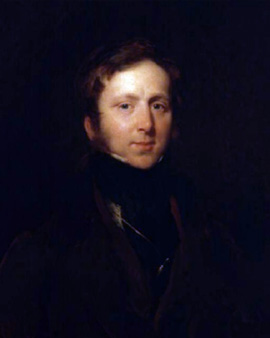


James Duffield Harding was one of the most famous British landscape painters of his time. His real talent, however, lay in lithography and the creation of drawing manuals. As the son of a master draughtsman he was born with this talent. His destiny, however, lay in teaching and inventing. His use of dyed paper and opaque paint influenced many painters of his time. At the age of 13 he already exhibited two of his drawings at the Royal Academy. This was a very high distinction at that time. After one year of apprenticeship with the engraver Charles Pye, he decided to stay with watercolour painting. At 18, he was awarded the silver medal for his work by the Society of Arts. Afterwards he exhibited at the Society of Watercolour Painters.
Duffield Harding's talent lay in inventing, even his own. He was always reinventing himself. So he switched to oil painting and exhibited again at the Royal Academy. He was particularly convincing in teaching. Duffield Harding was one of the most popular teachers of his time. Duffield Harding developed his own teaching material for his students. His manuals of painting are nowadays sought-after auction items. When lithography became known in Great Britain, he was one of the first to use it. Fascinated by this technique, he developed it further and celebrated great success with it. He used it mainly to print trees between two stones. His series of fifty plates, for which he used this method, were published in 1836 with great success. Instead of a pencil, he used a brush and thus invented his own way of lithography, which he called "lithotint". Winsor and Newton published many of his works on his inventions. Duffield Harding's teaching material was very popular not only with amateurs but also with professional painters. Winsor and Newton even sold pencils under Duffield Harding's name. The Winsor manuals became world-famous and explained in a vivid way how to draw with chalk or pencil. His drawing models and their use became the epitome of teaching material for drawing. He was also a brilliant businessman.
Duffield Hardings was a master of invention and one of the best teachers of his time. His success lay in the fact that he always turned to new areas and was open to new things. He was happy to pass on his knowledge. One of his strengths was that he always worked on improvements. Although he tried again and again to be admitted to the Royal Academy and exhibited, he never succeeded. One of his special gifts was to recognize when it was time to "move on". Therefore he gave up this venture after some time and became a member of the Society of Watercolour Painters again. He is the typical example of how when one door closes, another one opens.

James Duffield Harding was one of the most famous British landscape painters of his time. His real talent, however, lay in lithography and the creation of drawing manuals. As the son of a master draughtsman he was born with this talent. His destiny, however, lay in teaching and inventing. His use of dyed paper and opaque paint influenced many painters of his time. At the age of 13 he already exhibited two of his drawings at the Royal Academy. This was a very high distinction at that time. After one year of apprenticeship with the engraver Charles Pye, he decided to stay with watercolour painting. At 18, he was awarded the silver medal for his work by the Society of Arts. Afterwards he exhibited at the Society of Watercolour Painters.
Duffield Harding's talent lay in inventing, even his own. He was always reinventing himself. So he switched to oil painting and exhibited again at the Royal Academy. He was particularly convincing in teaching. Duffield Harding was one of the most popular teachers of his time. Duffield Harding developed his own teaching material for his students. His manuals of painting are nowadays sought-after auction items. When lithography became known in Great Britain, he was one of the first to use it. Fascinated by this technique, he developed it further and celebrated great success with it. He used it mainly to print trees between two stones. His series of fifty plates, for which he used this method, were published in 1836 with great success. Instead of a pencil, he used a brush and thus invented his own way of lithography, which he called "lithotint". Winsor and Newton published many of his works on his inventions. Duffield Harding's teaching material was very popular not only with amateurs but also with professional painters. Winsor and Newton even sold pencils under Duffield Harding's name. The Winsor manuals became world-famous and explained in a vivid way how to draw with chalk or pencil. His drawing models and their use became the epitome of teaching material for drawing. He was also a brilliant businessman.
Duffield Hardings was a master of invention and one of the best teachers of his time. His success lay in the fact that he always turned to new areas and was open to new things. He was happy to pass on his knowledge. One of his strengths was that he always worked on improvements. Although he tried again and again to be admitted to the Royal Academy and exhibited, he never succeeded. One of his special gifts was to recognize when it was time to "move on". Therefore he gave up this venture after some time and became a member of the Society of Watercolour Painters again. He is the typical example of how when one door closes, another one opens.
Page 1 / 3






